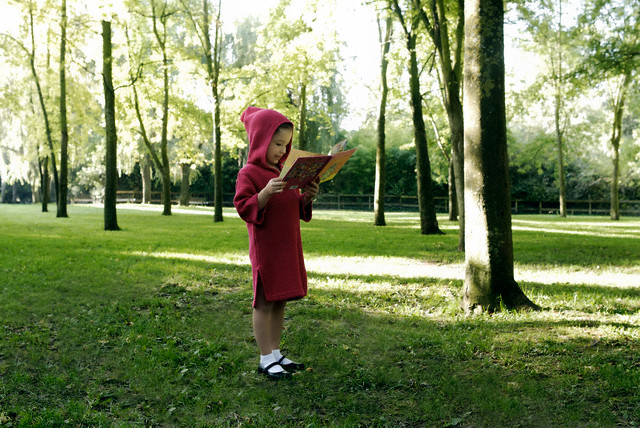I’m a sucker for the New. Whether it’s browsing the stacks of a bookstore and salivating at the tantalizing jacket copy, or streaming a 90-second clip of new music, the impulse to acquire is often too strong to resist. I cave; I buy; I apologize to my wife; I invest in more shelves; the cycle continues. Much in our culture feeds this hunger for the new, pointing us toward the future at the expense of the present or the past. After all, new is good for business. Mark down the inventory, clear the shelves, start again.
But what happens to the Old in all of this? Take old books, for example. Sure, new volumes with their scent of fresh glue and wood pulp are delicious in their, well, newness. But what about the smell of old books? Or the way they feel against the fingers, rough and buttery at the same time?
And what about the old stories? When visiting a new city on vacation, I love nothing more than wandering through its finest used bookstore, getting lost amidst the stacks, then unexpectedly stumbling upon a copy of Baum, or MacDonald, or the Hardy Boys or Paddington. Opening these books is like revisiting old friends. Far from nostalgia, the stories contained within remain rich and rewarding.
Last fall, I spent eight weeks in Narnia, as the director of our school play, and was privileged each day to watch an especially good Old Story, C.S. Lewis’ The Lion, the Witch, and the Wardrobe. You would think that after hours and hours of watching the story told and re-told, it would grow old. Instead, the night of our last dress rehearsal, I watched Aslan emerge from the wings to stand resurrected beside the cracked and ruined Stone Table, and the tears sprang to my eyes.
How is that possible? I knew Aslan was really a 17-year old girl named Lindsay in lion makeup; I knew the table to be plywood and foam and a few coats of gray paint. And yet the old story of betrayal, sacrifice, and redemption still wielded its mighty power. The truth and goodness and beauty contained within shone through as it has for generations since Lewis first penned it.
And this old Gospel story, why, it rings true most of all. Andrew Peterson describes it as “the old, old story/Of the power of death undone/by an infant born of Glory.” Sally Lloyd-Jones calls it “an adventure story about a young Hero who comes from a far country to win back his lost treasure … a love story about a brave Prince who leaves … everything to rescue the one he loves.”
There’s certainly nothing new or flashy about this story of rescue, but each time it is told, whatever the form, the Spirit hovers and speaks. Like the carvings on the Stone Table itself, there is a power in the old words and the old stories. They are arrows pointing us to the Deeper Magic, the One Story of love prevailing and death undone. Like singing the old hymns, when we read the old stories, we are caught up in a long line of pilgrims and bonded to their struggle and their victory. Their faith awakens ours. We can see with their eyes, hear with their ears, and be reminded of the Kingdom they too anticipated, as we do even today. And, we can see what we’ve gained.
So wherever you find them, in whatever form, cling to the old stories, wield them like torches in your lives, and find in them truth and strength more than you are capable of finding on your own.
- The Winter King: A Review - January 10, 2024
- Taking it Slow - November 13, 2023
- Calling Out Your Name: Rich Mullins, the Rocky Mountains, and Tumbleweed - October 17, 2022

“They are arrows pointing us to the Deeper Magic, the One Story of love prevailing and death undone. Like singing the old hymns, when we read the old stories, we are caught up in a long line of pilgrims and bonded to their struggle and their victory. Their faith awakens ours.” So beautiful.